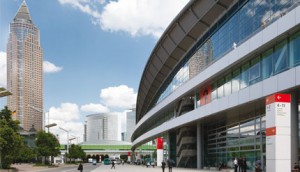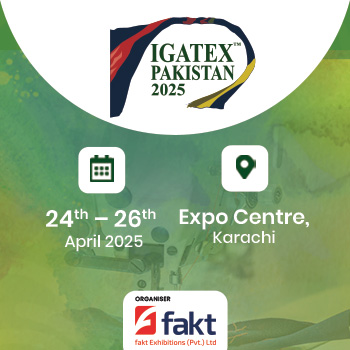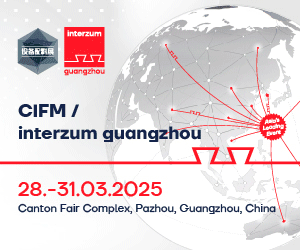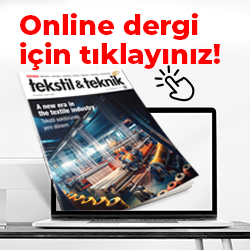 How can the textile and clothing industry be successful in the future?
How can the textile and clothing industry be successful in the future?
An increasingly important factor is the interdisciplinary co-operation from the fiber to the finished product. Alongside research and development, this applies clearly in the cost-driven world of everyday business. The textile production has therefore developed from coexistence to an interdisciplinary value added chain. How the today’s and tomorrow’s textile value added chain works will be shown at the Techtextil and Texprocess fairs to take place in Frankfurt from May 4 to 7, 2015. These leading international fairs for technical textiles, nonwovens and the processing of textile and flexible materials will offer solutions for the entire manufacturing process of textile and clothing. In the past, the processes in the textile sector resembled a staircase. The products were delivered gradually to the following step as the processing depth increased. At the end of the process, there was the finished product, waiting to be directed towards the end consumer or user. A feedback to the foot of the staircase in general only occurred with the aim of ordering fresh supply or stopping the process. Opportunities for intervention in the process were possible only to a limited extent. Mistakes and delays accrued from one stage to the next, because the processes followed on chronologically from one another.
The gap closing of the processing chain
Nowadays, the industry is speaking of a value added chain. A closed cycle interlocks the single processing steps. Thanks to modern information technology systems which are available worldwide and provide for automatic feedback, all links of the processing chain are communicating among each other. By this way, all segments of the value added chain starting with the fiber and ending with the finished product take benefit from the accelerated processes. Therefore the development phase and last but not least the time-to-market time span can be reduced. The former one-way street has now become a closed process cycle – interdisciplinary collaboration has triumphed. Such development had an effect on the manufacturers and processors of technical textiles and nonwovens. All steps of the textile production chain have joined to an IT-supported communicative whole unit. By this way, all chain links have a multitude of processing options which would not be possible by unilateral approach. For example, application-proven technologies for the subsequent processing of technical textiles, nonwovens and clothing are already available. PLM systems (Product Lifecycle-Management Systems) or modular IT solutions for cutting optimization are a daily routine in the clothing industry. Both 3D design and visualization make communication across language borders and country’s frontiers easier and save costs and time in the prototyping process as well. RFID labels ensure indistinct marking of shirts and skirts like roof liners or fenders. Thanks to these new technologies, the market conditions in the textile and clothing industry changed, too. In the past, the manufacturers of separation and joining technologies, yarns, needles, information technology systems and ironing equipment concentrated on the fields of application Clothtech, Medtech, Protech and Sporttech. Based on their competence in the field of manufacture of clothing, these companies have discovered the more and more important segment of technical textiles. Wind energy rotors must be designed and “cut to size” like sports jackets. Weather balloons must be sewed and/or glued like swimwear or filter systems. This interdisciplinary coexistence is increasing not only in the entire textile and clothing industry but is also demonstrated at the Techtextil and Texprocess fairs.
The entire textile process chain will be present in Frankfurt am Main
The Techtextil fair will offer a wide range of innovative materials which can be used in an open-ended manner by taking into account all processing options. Long ago, polypropylene fibers have been used not only for the manufacture of carpets or concrete reinforcements but also for the production of functional underwear. Aramids cannot only be found in highly stressed tires or seals but are also used in trimmings of hightech alpine boots or for motor cycle clothing. The already existing large number of processors at the Textextil fair has been increased and will be further increased at the Texprocess fair. This is a clear answer to the present needs of industry. In addition the Texprocess fair will present ‘ancillary products’ like special yarns and threads and the appropriate needles. The quality requirements can be ensured by means of CAD/CAM controlled equipment. In addition, documentation for safety-critical products will be provided. Fixing, lining and laminating equipment is there to join and secure readycut items of textile and non-textile materials. IT systems in the apparel industry already handle highly complex data sets. By this way, technical product cycles can be managed at a reasonable cost starting with the design and ending with marketing.
The innovative apparel show will demonstrate synergy effects
The Techtextil and Texprocess trade fairs will present by their complete spectrum of exhibits including all fields of the textile value added chain from preliminary processing of textile materials to processing technologies. Not only will the manufacturers of functional clothing textiles benefit from both fairs. Further common groups of exhibits of both fairs will be textiles for the automobile and aircraft industry, home and household textiles, upholstery and matrasses and technologies for the production, finishing and processing of textiles.










